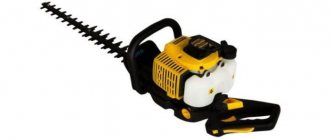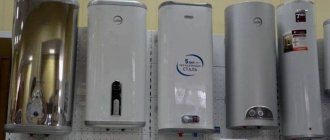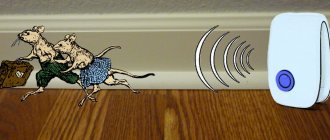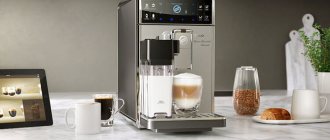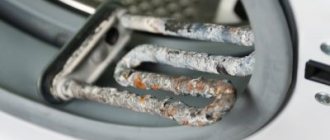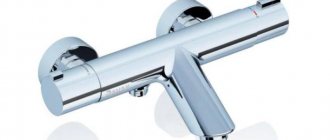One day, each of us is faced with the problem of buying a blood pressure monitor. Not necessarily for yourself; usually, elderly relatives begin to need them first. It turns out that there are a large number of models on sale that differ not only in price, but also in capabilities and functions. To evaluate how to choose a blood pressure monitor for home use, let’s consider the possible types and models.
What types of tonometers are there?
Perhaps some older people remember the old mercury blood pressure monitors, boxes made of durable dark plastic, inside of which there was a scale with mercury, a cuff and a bulb for inflation. They accurately measured pressure, but were unsafe - the glass flask periodically broke, and mercury, hazardous to health, poured out. That's why they are not produced now.
Modern tonometers differ into several large groups depending on the level of automation of the process.
- Mechanical
- Semi-automatic
- Slot machines
Mechanical blood pressure monitors
Mechanical tonometers replaced mercury blood pressure monitors several decades ago, and they continue to be used today. Each of the devices has the following elements:
- Clock face
- Cuff
- Phonendoscope
- Air pump
Principle of operation:
- Place the cuff on the forearm
- Place the stethoscope tube in the pulse area.
- Air is pumped using a rubber bulb. They determine by eye that there is no need to download further
- They begin to slowly bleed air from the system and note the value on the pressure gauge scale at which pulsation begins and the number at which it stops. These are, respectively, systolic and diastolic pressure.
The following processes occur in the body at this time. When the pressure is built up, at one point it will become higher than the blood pressure. It will stop passing through the vessels, no sounds will be heard. When the air is released, the lumen of the vessel opens and beats are heard in the tube. After the pressure in the system finally drops, the sound stops again. Mechanics are best used by medical professionals who correctly perform the measurement procedure.
Semi-automatic blood pressure monitors
Semi-automatic are so called because they independently perform the second half of the work. After the air is pumped into the bulb, it will deflate it itself and show the result on the screen.
This device uses an oscillometric measurement method. Fluctuations in the blood in the arteries as air is deflated cause vibrations in the air in the cuff. They are recorded by the device’s sensor, and the results are produced by the built-in processor. It’s easier to work, but still not as convenient as an automatic machine.
Automatic blood pressure monitors
The device consists of a cuff connected with a hose to the display on the device. Owners of the machines only need to put the cuff on their arm correctly and press the start button. The display will show three numbers located one below the other: systolic and diastolic pressure, pulse value.
Mechanical
To find out which tonometer is accurate, pay attention to mechanical devices. They consist of a shoulder cuff, a pressure gauge and an air pump with an adjustable valve. Blood pressure readings are determined by listening to characteristic sounds through a stethoscope. In this case, blood pressure is measured by a person who has the appropriate skills, so this type of equipment is recommended for healthcare workers. It is often used in public health facilities such as hospitals. Which tonometer is more accurate - popular models:
- Healthcare CS-105. High-precision mechanical device in a metal case from CS MEDICA. There is a built-in phonendoscope, a cuff (22-36 cm) made of nylon with a fixing metal ring, an elastic bulb with a needle valve and a dust filter. The kit includes a case for convenient storage of equipment. Relatively cheap (870 RUR).
- Healthcare CS-110 Premium. A professional device, the pressure gauge of which is combined with a bulb. Made in a shock-resistant polymer case with chrome coating. An enlarged cuff (22-39 cm) is used without a fixing bracket. There is a large and easy-to-read dial, a pleasant-to-touch pear with a chrome-plated release valve. The measurement accuracy is confirmed by the European standard EN1060. It costs more than its analogues (RUR 3,615).
- Microlife BP AG1-30. This high-precision sphygmomanometer consists of a bulb, an air release valve, and a storage bag. A professional cuff (22-32 cm) with a metal ring is used. The model is popular among domestic doctors. A distinctive feature is the stethoscope head sewn into the cuff. It is inexpensive (1200 rubles).
Operating principle of the sphygnomanometer
When measuring, the stethoscope must be applied to the inside of the elbow. After this, the specialist needs to pump air into the cuff - he does this until, due to compression, the blood pressure level drops to 30-40 mm Hg. Art. greater than the estimated systolic pressure (upper limit) of the person being tested. The air is then released slowly so that the cuff pressure decreases at a rate of 2 mm Hg. per second.
Gradually falling, the pressure in the cuff reaches the patient's systolic value. At this moment, noises called “Korotkoff sounds” begin to be heard in the stethoscope. Diastolic pressure (lower) is the moment when these murmurs end. The operating principle is as follows:
- When the air pressure in the cuff is pumped up and exceeds the same parameter in the vessels, the artery is compressed to such an extent that the blood flow through it is suspended. At this time there is silence in the stethoscope.
- When the pressure inside the cuff decreases and the lumen of the artery opens slightly, the blood flow resumes. At this moment, Korotkoff sounds begin to be heard in the stethoscope.
- When the pressure stabilizes and the artery opens completely, the noise disappears.
How to Measure Yourself Pressure with a MECHANICAL Tonometer
Pros and cons of mechanical devices
Which tonometer is more accurate? When answering this question, a mechanical device is in the lead. Advantages of a mechanical device:
- impressive accuracy;
- affordable cost;
- reliable;
- suitable for measuring blood pressure even in patients with arrhythmia.
The main disadvantage is considered to be the difficulty of operation, especially for older people and patients with poor vision and hearing, impaired movement of the limbs - for them it will be a useless acquisition. To make it easier to measure blood pressure, some models include a cuff with a built-in phonendoscope head and a combined supercharger with a pressure gauge. For this reason, a sphygmomanometer can still be purchased for use at home.
- Moscow ASC-DTI - what it is and what organization it is. Registered letters, notices with the code Moscow ASC-DTI
- Cranberry pie: recipes with photos
- White discharge in women
How to choose a tonometer
First, they decide on the type of tonometer to be purchased: automatic or semi-automatic. The machines are divided into two types according to the mounting method:
- On the wrist
- On the shoulder
Some experts believe that forearm models are more accurate, although this has not been confirmed by practice.
There are also streaming professional models that are used to measure blood pressure for a large number of people. But they are not bought for home use. The result is output to the printer.
Wrist blood pressure monitor
The tonometer with a wrist cuff is compact in size. The accuracy of their measurement is the same as that of a conventional one. And yet it is advised to buy them for people under 40 years of age. This is due to the fact that the blood vessels wear out over the years, especially the thin ones on the wrist. Therefore, measurement results may be inaccurate in older people.
Older people may have injuries (sprains, bruises) in the area of the wrist joint. Some people develop bones that make it difficult to properly install the device on their hand. In this case, it is not recommended to use a wrist blood pressure monitor for the elderly.
Shoulder blood pressure monitors
More traditional blood pressure monitors have a cuff that is placed on the upper arm. They are suitable for people of any age. When choosing, you need to take into account the thickness of your hand. If it is very thick, the cuff may not fit on it; the fasteners are located in different places for different models. If you are very thin, it may be uncomfortable to use. Therefore, it is better to try on a cuff before purchasing, because using a narrow one is very uncomfortable.
What is Intelligent Pressure Measurement Function
Most modern tonometers are equipped with an intelligent pressure measurement function. Its task is to ensure that with each measurement the device itself finds the optimal level of air injection. For patients with arrhythmia, it is better to buy a tonometer with an intelligent measurement function. It analyzes the pulse wave and will help you choose the smoothest area to accurately determine the pressure.
All modern tonometers are equipped with memory. By pressing the key, you can view previous results. If the tonometer will be used equally by two people, it is better to take a device with memory for two.
Useful additional features:
- MAM - the device performs 3 consecutive measurements and produces an average value
- PAD diagnoses arrhythmia, monitors stroke at an early stage
Some tonometers are equipped with a function for recording the date and time when the measurement takes place. This may be important for some users. Even more important is what type of power supply is provided: from the mains or from batteries. It's good if both methods are possible. In this case, the battery-powered device can be carried and used anywhere, and if the batteries run out, it will be possible to measure the pressure via the network.
It is advisable that the length of the hose be within 75 cm. A longer one will get tangled, and a shorter one will not reach you. Some users will find it convenient to control the operation of the device via a smartphone. But for this, Bluetooth must be installed inside.
How to identify good mechanical blood pressure monitors
When choosing a device you need to use the following criteria:
- Accuracy. The tonometer must come complete with a certificate of conformity and the actual measurement error. This minimum is mandatory. The permissible deviation from the norm is 3 mmHg for blood pressure and 5 beats for emergency.
- Speed of readings. Since it is impossible to speed up this procedure, it should take no more than a few minutes.
- Weight and size. A mechanical product is slightly smaller than an automatic one.
- Cost. Classic models are several times cheaper than new ones.
- Ease of use. This criterion is purely individual.
- Clear scale, large numbers. This is ensured by the large diameter of the pressure gauge, large divisions and numbers.
How to measure blood pressure correctly
It turns out that even measuring pressure automatically is not so easy. To get the most accurate result, you need to fulfill a number of conditions:
- The procedure begins 1-1.5 hours after eating
- Before taking measurements, do not drink coffee or strong tea, which contain caffeine and other stimulating substances.
- Do not smoke, so as not to constrict blood vessels and increase blood pressure
- Sit down at the table and sit quietly for 5 minutes
- Putting your mobile phone aside
- If you did hard work before the measurement, wait half an hour to calm down.
- Before starting the procedure, it is advisable to go to the toilet, because tension in this area can lead to increased pressure
They sit on a chair, leaning against the back. The legs are placed straight, without crossing. Place the cuff so that it is 2 cm above the elbow. In some cases, you can measure while lying down, but make sure that the measurement site is at the level of the heart.
Place your hand on the table on which the tonometer lies. Position it so that the middle of the cuff is at the level of the heart. If the device is used on the wrist, it is also held at heart level and supported with the other hand. A change of even 5 cm from the middle of the cuff will lead to an incorrect result. Fix the cuff on the arm so that it does not dangle, but does not tighten the arm too much. You cannot actively communicate during the measurement.
Types of tonometers
Now let's take a closer look at what types of tonometers there are for home blood pressure monitoring. Let's pay attention to mechanical, semi-automatic and automatic tonometer.
Mechanical
The simplest and cheapest option for a home blood pressure monitor. Consists of a cuff, a rubber bulb for pumping air, a phonendoscope and a pressure gauge with a dial and arrow.
To measure pressure using such a device, you must perform the following sequence of actions:
- Place the cuff on your forearm. Before doing this, do not forget to free your hand from clothing, since measurement accuracy decreases significantly through fabric. Keep your hand relaxed. It is best to sit at the table or lie on the bed.
- Place the end of the phonendoscope on the artery in the bend of the elbow, and insert the headphones into your ears. In some modern models, the phonendoscope is already fixed in the correct position. Make sure there are no extraneous loud sounds in the room.
- Using a bulb, pump air into the cuff, while the pressure gauge needle will move upward. Do not overdo it too much, so as not to crush your hand and disrupt blood circulation.
- Use the ring on the pressure gauge to gradually release air from the cuff. Listen carefully when the rhythmic pulsation of blood flow begins in the headphones. This will indicate the upper pressure value. Then notice when the pulsing stops. This will be the lower pressure reading. For example, the noise in the headphones began to sound when the pressure gauge needle was opposite the value of 120, and stopped at 80. This means that your blood pressure is 120/80.
Mechanical blood pressure monitors are quite accurate if done correctly and there is no extraneous noise in the room. Although the procedure does not require medical education, some skills and dexterity will still be needed. In addition, at very high pressure it can be quite difficult to measure yourself. In this case, it is better to ask outside help.
Semi-automatic
This device is a cross between a mechanical and automatic tonometer. From the mechanical, the semi-automatic tonometer borrowed a cuff on the forearm and a bulb for pumping air, and from the automatic, the absence of a separate phonendoscope and the display of readings on a liquid crystal screen. Measuring pressure with such a device is much easier, since the necessary skills are to put on a cuff and pump air.
Let's take a closer look at the sequence of actions.
- Place the cuff on your forearm. As in the case of a mechanical tonometer, it is necessary to free your hand from clothing for accurate measurement. Attach the cuff tightly and make sure there is not much space between the cuff and your arm. This is very important because the built-in measuring membrane is quite sensitive and the measurement may fail if the lumen is large. Also make sure that your hand rests in a relaxed state on the table, or lie down on the bed.
- Use a bulb to inflate the cuff with air. Watch your sensations so that your hand is not squeezed and blood circulation is not impaired. If your hand begins to go numb, lower the air.
- Use the ring to slowly deflate the cuff. Wait until the screen displays your blood pressure and, in some models, your heart rate.
As you can see, a semi-automatic blood pressure monitor is much easier to use than a mechanical one, and its accuracy is no different from automatic models. Such a device costs slightly more than a mechanical one, but is cheaper than a fully automatic one.
Auto
The most expensive, but easiest to use type of tonometer. It is a small electronic device with a screen and a wrist cuff. To use it you need the most minimal skills. Let's look at how to properly use an automatic blood pressure monitor.
- Free your wrists from clothing and put on the device with a cuff. Make sure your hand is relaxed and your wrist is approximately at heart level. To do this, it is best to place your elbow on the table and grab your shoulder with your fingers. In this case, the conditions will be met. Also, some manufacturers may additionally indicate under what conditions the most accurate measurements can be achieved.
- Press the power button and wait for the measurement results. While the measurement process is in progress, numbers may flash on the screen. During this time, try to keep any hand movements to a minimum, as the machine is very sensitive and the slightest deviation in hand position can affect accuracy.
An automatic tonometer is the best choice for those who are unable or unwilling to deal with the intricacies of measurement when using a mechanical device. But you have to pay for convenience, since such models are the most expensive.
How to choose a blood pressure monitor for an elderly person
A tonometer for an elderly person should:
- Be an automaton
- The cuff is worn on the shoulder
- The numbers should be as large as possible, and the number of control buttons should be minimal.
Older people usually have difficulty remembering more than one or two operations with new technology. They often get lost when they find themselves in an unfamiliar menu item and don't understand how to get out of there. Therefore, it’s not worth buying a device with bells and whistles for them, unless your grandparents are advanced.
It’s good if the batteries don’t discharge very quickly, it’s even better if the device can be powered by an adapter. However, it is not a fact that they will quickly figure out where that adapter is and what to do with it. Therefore, keep it in a visible place and remind your relatives from time to time.
Which tonometer is better
It is difficult to clearly determine which tonometer is better. For a doctor, this will be a model with a large, but not excessive, set of functions. for example, Omnor M3 Comfort HEV 7134. For a young man who plays sports, but sometimes has health problems, this is the wrist AND US-202 at a low price, comfortable and reliable.
Ordinary elderly users or people of pre-retirement age do not need expensive and sophisticated ones. The reliable and simple AND UA 688AC is suitable for them.
Omnor M2 Basic HEM-7121-ARU is suitable for those whose entire life is focused on their smartphone.
Conclusion
There is a wide selection of tonometers on the market from well-known and not very popular manufacturers. Therefore, every user will find what he is looking for. But first you need to decide which set of functions is important for it.
In addition, you need to learn how to measure pressure correctly. Then a tonometer for measuring blood pressure will become a real helper. It will allow you to notice problems in the activity of the cardiovascular system in time and take measures to ensure that they do not become fatal.
